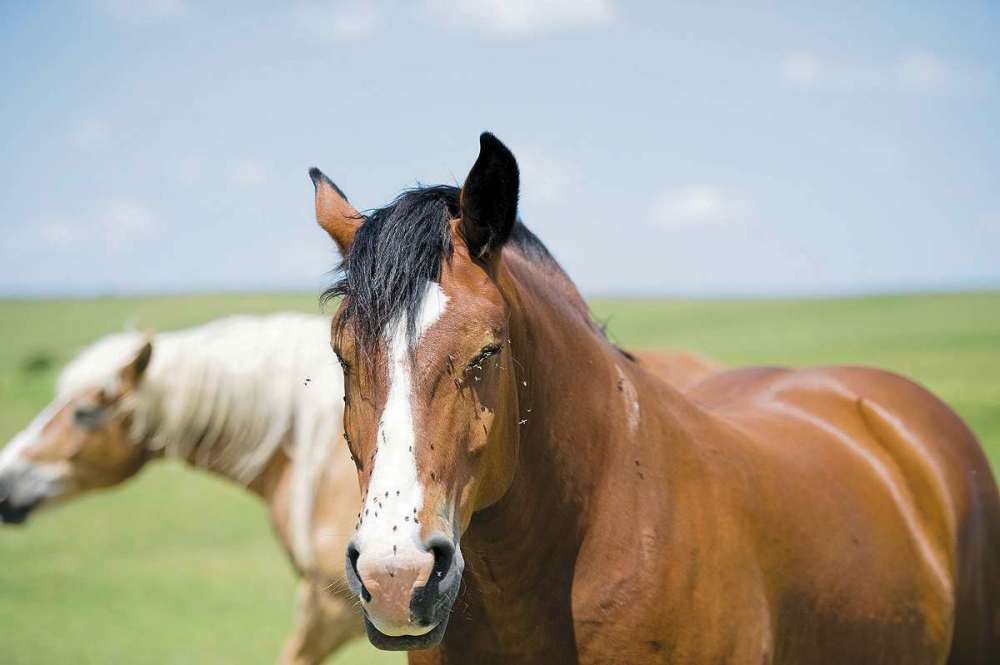Keep your horses free of swamp fever
Advertisement
Hey there, time traveller!
This article was published 04/08/2017 (2979 days ago), so information in it may no longer be current.
Swamp fever (a.k.a. equine infectious anemia) is a horse virus that has recently reared its ugly head here in Manitoba. It is an ugly virus because we have no treatment, no vaccine and no cure.
EIA, as it is better known, is a lentivirus similar to HIV in people. EIA does not affect people, though, only horses, donkeys and other equids.
It is spread via direct blood transmission with the primary means of spread being large biting flies such as horse flies. It can also be spread through ‘dirty’ needles (such as by reusing needles on horses within a herd).

EIA is an old virus that has been circulating in horses for many hundreds of years. It causes a range of symptoms including, fever; depression; anorexia (not wanting to eat); limb edema (a.k.a. stocking up) in all four legs and even edema on the belly and sheath; low platelet and red blood cell counts; poor clotting; small hemorrhages in the mucous membranes and eventually death.
Horses can be infected and not show symptoms, as well, which complicates the matter of identifying infected horses that are potential sources of spread.
EIA is a federally reportable disease in Canada and the United States, so any horse that shows positive on an antibody test (called a Coggins test) will be reported to the federal authorities in animal health — the Canadian Food Inspection Agency (CFIA).
The mandate of the federal government for this disease is eradication. As such, when a horse tests positive for this virus, it is euthanized to prevent any further spread.
There is a second option of providing a life-long isolated quarantine of the infected horse, but this option is often not reasonable for an active horse.
Testing and prevention are the keys to controlling EIA. Testing is performed by an CFIA accredited veterinarian — which most general practise and equine veterinarians are. The test will cost in the range of $50 to $100 depending on what is included in the charge — actual test fee, couriers, lab fees, travel fees, etc.
The test generally takes about three days to come back and can be electronically reported via email. By eliminating carrier and infected horses, the disease can be controlled in the general horse population, which is important.
Prevention involves primary fly control — fly nets, fly sheets, fly sprays and insecticides, removing manure and standing water sources.
Only gathering with groups of negative-tested horses is also important in helping to control this difficult disease.
If you would like more information about EIA, contact your veterinarian or visit the CFIA information websites.
Chris Bell is an equine veterinarian and surgical specialist who operates Elders Equine Veterinary Service, with clinics in Cartier and Winnipeg. See www.eldersequineclinic.com.




